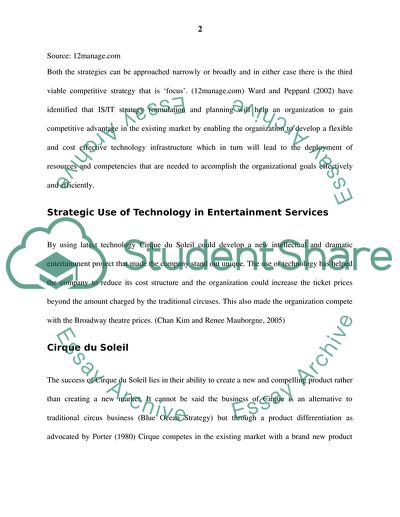Cite this document
(Evaluation of the IT Alignment in Cirque Du Soleil Case Study, n.d.)
Evaluation of the IT Alignment in Cirque Du Soleil Case Study. Retrieved from https://studentshare.org/information-technology/1549400-strategic-business-information-systems-cirque-du-soleils-information-technology-initiatives
Evaluation of the IT Alignment in Cirque Du Soleil Case Study. Retrieved from https://studentshare.org/information-technology/1549400-strategic-business-information-systems-cirque-du-soleils-information-technology-initiatives
(Evaluation of the IT Alignment in Cirque Du Soleil Case Study)
Evaluation of the IT Alignment in Cirque Du Soleil Case Study. https://studentshare.org/information-technology/1549400-strategic-business-information-systems-cirque-du-soleils-information-technology-initiatives.
Evaluation of the IT Alignment in Cirque Du Soleil Case Study. https://studentshare.org/information-technology/1549400-strategic-business-information-systems-cirque-du-soleils-information-technology-initiatives.
“Evaluation of the IT Alignment in Cirque Du Soleil Case Study”. https://studentshare.org/information-technology/1549400-strategic-business-information-systems-cirque-du-soleils-information-technology-initiatives.


